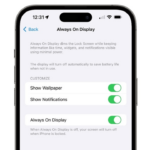What Is Google Fi, and How Does It Differ From Other Carriers?
Cellular Carriers
Key Takeaways
- Google Fi is an MVNO that piggybacks on T-Mobile’s network for service.
- Google Fi offers Flexible plans with pay-as-you-go data and Simply Unlimited plans with various data allowances.
- Google Fi provides good coverage in many areas and offers international data usage with some plans.
Ever feel like you’re overpaying for data you never use or stuck with complicated phone plans? Google Fi offers an alternative, promising a more flexible and potentially cheaper phone service. But before switching, it’s important to understand exactly what Google Fi is and how it works.
Google Fi is an MVNO
Google Fi isn’t a traditional carrier like Verizon or AT&T. Instead, it’s a “mobile virtual network operator”—more commonly referred to as an “MVNO.” This means Google Fi doesn’t own its own cell towers. Instead, it piggybacks on the infrastructure of existing carriers to provide service. This is a win/win as the big carriers can lease their infrastructure to MVNOs for a fee, and then the MVNOs aren’t bogged down by maintaining network equipment. Mint Mobile, Tello, Ting, and Visible are some other popular MVNOs in the U.S.
T-Mobile is the Main Network Powering Fi
When Google Fi launched in 2015 (as “Project Fi”), it was powered by T-Mobile, Sprint, and U.S. Cellular. It could intelligently switch between those three carriers depending on which one had the best service. That was a very cool feature, but it was only supported on select devices. Over time, Fi expanded to more devices, and with T-Mobile’s acquisition of Sprint, the network switching feature became less of a selling point.
Nowadays, Google Fi relies solely on T-Mobile’s network—U.S. Cellular pulled out in 2023. You’ll get good coverage in areas where T-Mobile has a strong signal. This is a major benefit, as T-Mobile has one of the most robust networks in the U.S. (which is why so many MVNOs use it). Google Fi customers get 5G in mmWave, Low Band, and Mid-Band flavors.
The Plans are Very Simple
One of the key features of Google Fi is its focus on flexibility. Unlike traditional plans with fixed data allowances, Google Fi’s original claim to fame was a pay-as-you-go approach for data. That continues to this day in addition to “Unlimited” plans. Here’s a breakdown of Google Fi’s single-line plans:
- Flexible: This is the core plan of Google Fi. You pay a base price of $20 for unlimited calls and texts; then, data costs $10 per GB (no charge beyond 6GB). You also get unlimited hotspot tethering and data-only SIMs.
- Simply Unlimited: $50 for unlimited calls, texts, and data. 5GB of hotspot tethering, no data-only SIMs.
- Unlimited Plus: $65 for unlimited calls, texts, data, 100GB of Google One storage, unlimited hotspot tethering, and data-only SIMs.
Google Fi supports plans with multiple lines as well, and pricing gets better the more lines you have (up to six).
|
2 |
3 |
4 |
5 |
6 |
|
|---|---|---|---|---|---|
|
Flexible (Base Price) |
$35 |
$50 |
$65 |
$80 |
$95 |
|
Simply Unlimited |
$80 |
$90 |
$100 |
$125 |
$150 |
|
Unlimited Plus |
$110 |
$135 |
$160 |
$200 |
$240 |
When traveling outside of the US, Canada, and Mexico, data rates for the Flexible and Unlimited Plus plans are unchanged, plus you still get free texts, and calls are $0.20 per minute. The Simply Unlimited Plan does not include international calls, texts, or data.
Google Fi has been around for a while, and it still offers a compelling alternative for people looking for flexibility and potentially lower costs. By piggybacking on T-Mobile, Fi provides great coverage in many areas. The pay-as-you-go data structure can be a major advantage for those who don’t use much data each month. Ultimately, Google Fi is a solid option for users who value flexibility and control over their phone plan.













